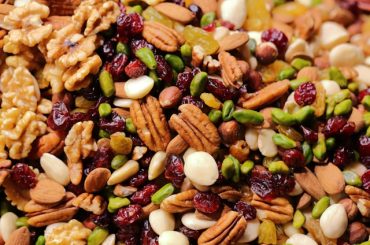Before we dive deep into the SWOT analysis, let’s get the business overview of Danone. Danone is a French multinational food-products corporation headquartered in Paris, with its global operations based in Hoofddorp, Netherlands. Founded 1919 in Barcelona, Spain, Danone has grown into a leading global food & beverage company dedicated to bringing health through food to as many people as possible. The company operates in four main business lines: Essential Dairy and Plant-Based Products, Waters, Early Life Nutrition, and Medical Nutrition, aiming to inspire healthier and more sustainable eating and drinking practices.
Danone’s diverse product portfolio includes baby food, coffee, dairy products, dairy-free products, bottled water, and dietary supplements, sold under various brands globally, with some products branded as Dannon in the United States.
Here is the SWOT analysis for Danone
A SWOT analysis is a strategic planning tool used to evaluate the Strengths, Weaknesses, Opportunities, and Threats of a business, project, or individual. It involves identifying the internal and external factors that can affect a venture’s success or failure and analyzing them to develop a strategic plan. In this article, we do a SWOT Analysis of Danone.
SWOT Analysis: Meaning, Importance, and Examples
Strengths
- Global Presence and Brand Recognition: Danone operates worldwide, serving products in 120 markets. Its global footprint and well-recognized brands, like Activia, Actimel, and Alpro, contribute to a strong market presence.
- Diverse Product Portfolio: Danone offers a wide range of products, including dairy and plant-based products, bottled water, baby food, and medical nutrition. This diversification allows Danone to cater to various consumer preferences and dietary needs, reducing dependency on a single market segment.
- Commitment to Health and Sustainability: Danone’s mission aligns with the “One Planet. One Health” frame of action, emphasizing the link between the health of people and the planet. This commitment is reflected in their efforts towards sustainable packaging, water stewardship, and regenerative agriculture.
- Innovation and Research: The company strongly emphasizes research and innovation to develop and improve new products. This focus helps Danone to stay ahead in the competitive food and beverage industry by meeting evolving consumer demands.
- Strong Financial Performance: Danone has demonstrated solid financial performance with significant revenue, operating income, and a healthy asset portfolio. This financial stability supports its operational and strategic initiatives.
- Strategic Acquisitions and Partnerships: Danone has grown through strategic acquisitions, such as the purchase of WhiteWave Foods, which expanded its plant-based and organic product lines. These acquisitions have strengthened its position in key markets and sectors.
- B Corp and Société à Mission Status: Danone’s subsidiaries, including Danone North America, have achieved B Corp certification, reflecting their high social and environmental performance standards. Danone also adopted the “Société à Mission” status in France, reinforcing its commitment to social and environmental goals.
Weaknesses
- Market and Supply Chain Vulnerabilities: Danone’s global presence exposes it to geopolitical risks, regulatory changes, and supply chain disruptions in various regions. These factors can affect the availability of raw materials and the overall cost of production, impacting profitability.
- Competition: Danone operates in highly competitive markets, facing stiff competition from global giants and local players across its various segments, including dairy, plant-based products, water, and baby nutrition. This competition can pressure prices and market share and necessitate continuous investment in marketing and innovation to stay ahead.
- Consumer Behavior Shifts: Rapid changes in consumer preferences towards more local, organic, or non-processed foods can challenge Danone’s product offerings. Adapting to these trends requires constant innovation and may lead to increased costs in reformulating products or launching new lines.
- Regulatory Challenges: Danone’s commitment to health and sustainability, while a strength, also means navigating complex regulatory environments across different countries. Regulations regarding health claims, environmental practices, and packaging can impact how Danone markets and sells its products, requiring continuous monitoring and adaptation.
- Integration of Acquisitions: While acquisitions have helped Danone grow, integrating these businesses into the larger structure poses challenges. Ensuring that new acquisitions align with Danone’s corporate culture, operational standards, and sustainability goals requires significant effort and resources.
Opportunities
- Expansion in Emerging Markets: Danone can capitalize on its global presence to penetrate emerging markets further where demand for dairy and plant-based products is growing. These regions offer significant growth potential due to rising incomes, urbanization, and changing dietary habits.
- Innovation in Plant-Based and Organic Products: The increasing consumer interest in health, wellness, and sustainability allows Danone to expand its plant-based and organic product lines. Innovations in these areas can meet the growing demand for healthier and more sustainable food choices.
- Sustainability Initiatives: Danone’s commitment to sustainability and achieving its “One Planet. One Health” vision aligns with global trends towards environmental responsibility. There is an opportunity to lead in sustainable practices, from regenerative agriculture to water stewardship and circular packaging solutions, enhancing brand reputation and consumer loyalty.
- Digital Transformation: Advancing digital capabilities in operations, supply chain management, and customer engagement can improve efficiency and offer personalized consumer experiences. Data analytics for market insights and consumer trends can further drive product innovation and marketing strategies.
- Health and Nutrition Focus: As consumers become more health-conscious, there is an opportunity for Danone to leverage its expertise in nutrition and probiotics to develop functional foods that offer specific health benefits, catering to niche markets and health trends.
- Strategic Partnerships and Collaborations: Collaborating with startups, research institutions, and technology companies can spur innovation in product development, sustainable practices, and market expansion. Danone’s venture arm, Danone Manifesto Ventures, can be pivotal in fostering these partnerships.
Threats
- Market Competition: Danone operates in highly competitive sectors, facing challenges from multinational corporations and local players across its product lines. Increased competition can pressure prices, affect market share, and necessitate continuous innovation and marketing efforts to maintain its position.
- Regulatory Risks: The food and beverage industry is subject to stringent regulations worldwide, which can vary significantly from one region to another. Changes in regulations related to health claims, environmental standards, and packaging can pose challenges and lead to increased costs for compliance.
- Supply Chain Disruptions: Danone’s global supply chain is susceptible to disruptions from various factors, including geopolitical tensions, trade disputes, pandemics, and natural disasters. Such disruptions can affect the availability and cost of raw materials, impacting production and profitability.
- Consumer Preferences and Health Trends: Rapid shifts in consumer preferences towards local, organic, and non-processed foods can impact Danone’s traditional product lines. Adapting to these trends requires constant innovation and may lead to increased costs in reformulating products or launching new ones.
- Economic Fluctuations: Economic downturns in key markets can affect consumer spending patterns, particularly for non-essential goods. This could reduce demand for some of Danone’s products, impacting sales and revenue.
- Environmental and Sustainability Pressures: As a company committed to sustainability, Danone faces the challenge of meeting high environmental standards and consumer expectations. Failure to achieve its sustainability goals could affect its reputation and customer loyalty.









